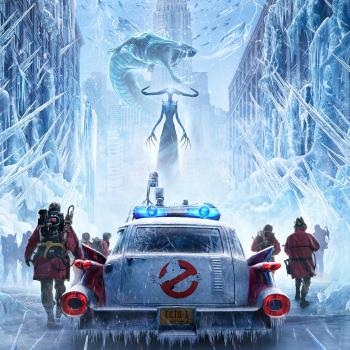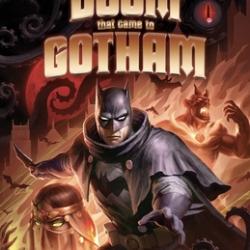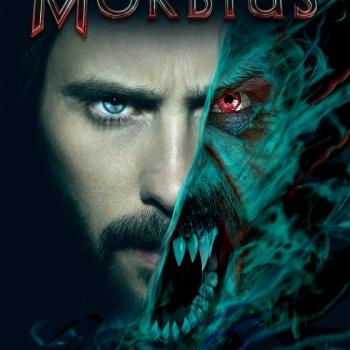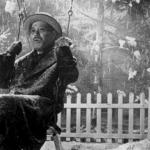Review of Red River, Directed by Howard Hawks
Howard Hawks was one of the most prolific and famous of the early Hollywood directors. He made some great classics, but not many of them were westerns. He didn’t specialize in westerns the way, say, John Ford did. He only made five films with John Wayne (one of them set in Africa), compared to the fifteen or so Ford made with him (not counting the dozens of films from the 1920s in which Wayne had bit parts). And while the Ford-Wayne collaborations eventually boasted some of the greatest films of their era, including The Searchers (1956) and The Man Who Shot Liberty Valance (1962) (see our reviews here), Hawks’ are a different lot.
Red River (1948) is a good illustration. The movie, the first of the five collaborations between Hawks and Wayne, is midway through Wayne’s career and shows some of the maturation of his later work. It isn’t a tossed-off affair like the serials of the 1920s and has flashes of brilliance. It got Oscar nominations for its writing and editing. Roger Ebert counted it among his “Great Movies” and the British Film Institute honored it with a place among the best 250 movies of all time. The open-air cinematography shows off the vast Arizona sky and desert, and John Wayne’s acting is solid. But it falls shy of greatness, undone largely because of an ending that fails to deliver on the buildup of the whole movie. 
Red River is the story of Ton Dunston (Wayne) and his maniacal determination to drive his 9,000 head of cattle a thousand miles north along the Chisholm Trail to a railhead in Missouri—and his conflict with Matt Garth (Montgomery Clift), his adopted son and second-in-command. Dunston grows increasingly tyrannical and even mad as he drives men and cattle through desert and hunger, across river, through Indian country, under threat of attack from border gangs. Dunston is driven by desperation, knowing that this drive is his only chance to cash in on 15 years of work building up his herd. Failure means bankruptcy.
Dunston is first helped, then opposed, by Garth, who has a younger man’s idealism, boldness, and speed on the draw. It is not too much of a spoiler to say that halfway through the movie, Garth leads a mutiny against Dunston, supported by the wranglers who believe Dunston is driving them not to Missouri, but to their graves. Garth then faces all the challenges of the drive without Dunston’s single-minded determination to keep them moving.
The movie thus appears to be, and for much of its running time is, a movie about Dunston’s brand of leadership and the contrast he draws with Garth. You can make two kinds of movies about autocratic leadership. You can make a tragedy, like Aguirre: The Wrath of God (1972), in which the autocrat goes mad, gets everyone around him killed, and fails in his mission because of his tragic flaws (Marlon Brando in Apocalypse Now (1979) also fits this type, though his story isn’t the center of the film). Or you can make a laudatory drama, like Master and Commander: The Far Side of the World (2003), in which the firm leader is the hero-savior whose firmness keeps everyone together in the face of overwhelming opposition.
Red River can’t quite decide which sort of movie it wants to be, and never really resolves the tension between Dunston and Garth: the ultimate tragic flaw is in the movie itself more than in Dunston. [Spoilers ahead]. The movie drives towards a confrontation between Dunston and Garth, complete with the obligatory western scene of antagonists facing off in a dusty street and one growling to the other “draw!” In a tragic version of Red River, Dunston would kill Garth and most of his men in the finale and ruin his own cattle drive. His tragic fate would be living with the knowledge that he had killed his own son and bankrupted his business for the sake of his pride. This version of Red River would be derived from Proverbs 16:18: “Pride goes before destruction; a haughty spirit before a fall.”
In the other version of Red River, Dunston and Garth’s conflict would come to a head earlier in the movie; they would struggle but somehow reconcile, each learning from the other; and then would confront some final obstacle—the border gangs, perhaps, who inexplicably never actually show up in the movie—and only overcome by working together with their relative strengths. Dunston’s harsh leadership would be tempered but ultimately vindicated. This version of Red River would embody Proverbs 29:18: “Where there is no vision, the people perish.”
Either version would have been satisfying and coherent. The movie, ultimately, is neither. Instead, Dunston and Garth punch each other a few times and then decide, thanks to a lecture from Garth’s love interest, that all is forgiven—and the movie abruptly ends. It is a lazy ending that fails to resolve the central tension of the film.
Red River has some magnificent and even epic sequences. The rivalry between the two central characters is well-drawn and their inverse arcs of growth through the various episodes of the cattle drive are expertly shown. The look and feel of the film is paradigmatically western and this is one of John Wayne’s better turns as an actor (that I’ve seen); any fan of the genre will enjoy it. With just a few tweaks to the ending, this could have been one of the greats. Alas, not every movie can capture lightning in a bottle.












